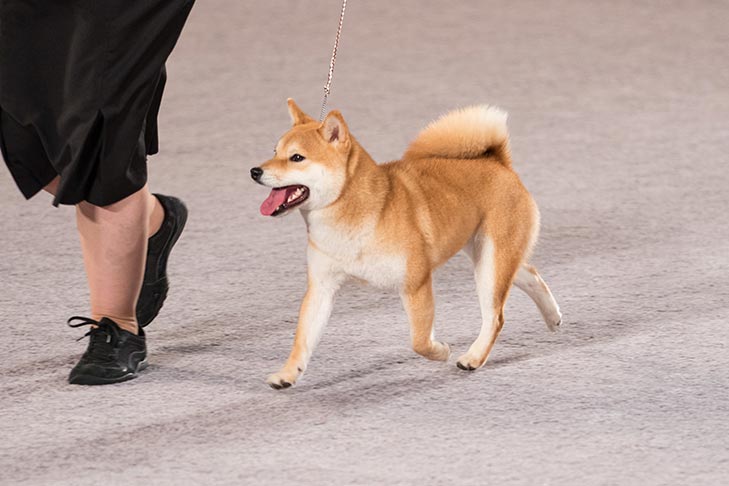An ancient Japanese breed, the Shiba Inu is a little but well-muscled dog once employed as a hunter. Today, the spirited, good-natured Shiba is the most popular companion dog in Japan. The adaptable Shiba is at home in town or country. Brought to America from Japan as recently as 60 years ago, Shibas are growing in popularity in the West and are already the most popular breed in their homeland. Their white markings combined with their coloring (red, red sesame, or black and tan) and their alert expression and smooth stride makes them almost foxlike. They’re sturdy, muscular dogs with a bold, confident personality to match.
Shiba Inu
Average sizes and life
expectancy of the breed.
Height
14.5-16.5 inches (male)
13.5-15.5 inches (female)
Weight
23 pounds (male)
17 pounds (female)
Life Expectancy
13-16 years
Breed Traits & Characteristics
About the Breed

Owning a dog is not just a privilege; it’s a responsibility. They depend on us for, at minimum, food and shelter, and deserve much more. When you take a dog into your life, you need to understand the commitment that dog ownership entails.
 Health
Health
The most common health condition in Shibas and in most breeds, as well as humans, is allergies. In dogs, allergies manifest themselves as skin irritation and itching. There is no way of testing breeding stock, but dogs with active allergies should not be bred. Unless the source of the allergen can be identified, most dogs with allergies can lead normal lives with products that treat the symptoms'¿again, just like humans. Allergies usually don't manifest themselves until a dog is at least 6 months old. Responsible breeders screen their stock for health conditions such as hip dysplasia, eye disorders, and patella luxation.
Recommended Health Tests From the National Breed Club:
- Patella Evaluation
- Hip Evaluation
- Ophthalmologist Evaluation
 Grooming
Grooming
 Exercise
Exercise
 Training
Training
 Nutrition
Nutrition
History
The first documented Shiba to enter the United States was imported by a military family in 1954. But the Shiba is an ancient breed, having been around since 300 b.c. The breed is named after its history as a hunter in the rugged mountains of Japan; “Shiba” means “brushwood” (referring either to the brush in the mountains or to the dog’s reddish color) in Japanese, and “Inu” means “dog.” By the end of World War II Shibas were nearly extinct, but they survived Japan’s wartime deprivations and are today the country’s number-one companion animal. Their popularity has been growing in the United States for the past 50 years.










